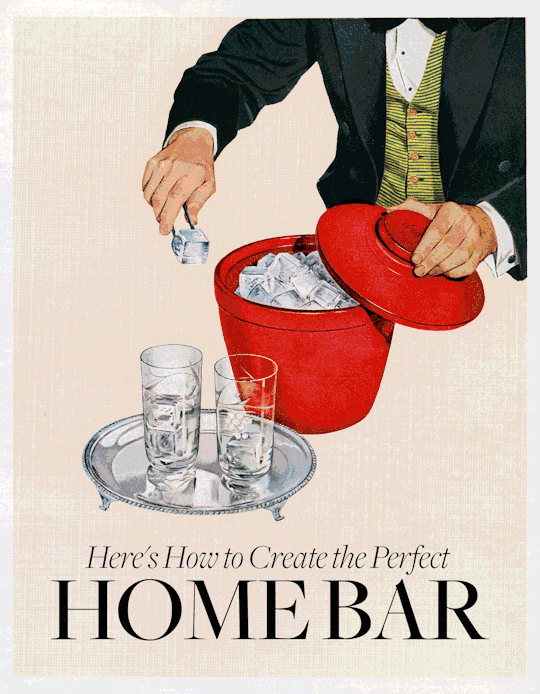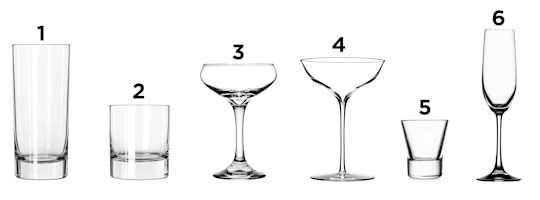Here's How to Create the Perfect Home Bar

Having a well-stocked bar is a sure sign that you’ve finally entered adulthood—you’ve moved on from the days of mismatched six packs casually dwindling in the fridge and subbing club soda for tonic water. So if you haven’t already, it’s time to get serious with your cocktail game, and to help you, we tapped Justin Briggs, the expert bartender behind the beverage program at James, a restaurant in Brooklyn’s Prospect Heights neighborhood, to break down the essential elements of the ultimate home bar. In addition to designing the restaurant’s highly conceptual cocktails, Briggs is the man behind the wildly popular Cecil & Merl bitters line, which he perfected alongside the founder, Deborah Williamson, at their Brooklyn HQ. Read on for Briggs’s essential bar tools, glassware picks, and, most importantly, his take on the perfect liquor selection.

Tools Of The Trade
1. Jigger. “You don’t want to be eyeballing or guestimating when you’re making a drink,” says Briggs.
2. Shaker tin. “I prefer two tins that lock together, a 22 oz. and 16 oz. Koriko tins are a top-of-the-bar standard to go by.”
3. Muddler
4. Bar spoon
5. Mixing glass
6. Wine key. “Always go for a double pump.”
7. Two kinds of strainers: Hawthorne (the one with the spring) and a Julep strainer (the perforated spoon). “It’s crucial to have both. The Hawthorne strainer is designed to play with your shaker tin, the julep strainer goes with your mixing glass. You can control the aperture with the spring on your Hawthorne strainer in conjunction with the metal tin, but, if you use a Hawthorne strainer to muddle mint into your drink, it’ll get all caught up in your spring—with a Julep strainer, you wipe it off and you’re done.”
8. Bonus Items: “To have a complete, full range of possibility, you need a paring knife, a little cutting board, a micro plane for grating fresh spices like nutmeg, a swivel peeler with a wide mouth (a wide swath of citrus peel imparts essential oils better than a thin swivel), and fine mesh strainer to strain the pulp out of citrus juices to control the texture of the drink.”

Essential Glassware
1. Highball or Collins, more than 12 oz. in volume
2. Rocks glass
3. One glass to serve drinks in which to serve drinks “up.” “Anything stemmed that is wider at the top and allows the drink to open up rather than stay contained like a wine glass.”
4. Wine glass. “On the stem versus stemless debate, I think it depends on how often you’re holding your glass. I am a big fan of stems, I don’t like to transfer my body heat to something that might be refreshing,” says Briggs.
5. Shot glass
6. Flute

The Ultimate Liquor Selection
1. Gin, and preferably not just one gin. “Different styles of gin have different applications and different effects on your cocktail,” says Briggs. To make classic drinks and have the widest possible diversity, he suggests having London Dry and Old Tom iterations on hand, such as Green Hook Ginsmiths Old Tom and Dorothy Parker American Gin.
2. Brandy. A cognac and an apple brandy like Laird’s Applejack. “Don’t mix cocktails with cognacs with too much age—go for something between 5 and 10 years old,” Briggs cautions.
3. American whiskey. “You need to have a rye and a bourbon to have a complete and killer home bar. For most of your base spirits, aim for a higher proof—it’ll hold more of the flavors around it in the drink and you’ll get deeper expressions of the ingredients it’s paired against.” Briggs’ favorites are Rittenhouse Rye and Medley Brothers bourbon.
4. Vermouth. Briggs suggests Dolin Vermouth de Chambéry. His insider tip? Refrigerate your vermouth for a longer lifespan.
5. Triple sec. “Don’t buy the cheap stuff, buy something made with actual Curaçao oranges as close to 80 proof as you can get,” says Briggs. He suggests Giffard’s version.
6. Rum. “Have at least two runs, one silver and one aged,” says Briggs. But if you only get one, Brigg’s pick is El Dorado 3 year, which he calls “amazing for the price and super functional—and from a historic distillery.”
7. Agave. One tequila and one Mezcal that are both 100% agave.
8. Bitters. “At the very least, you need to have angostura, Peychauds, and orange bitters. These days, we’re lucky enough to have all three of those widely available, plus tons of delicious and fascinating new flavors, like Cecil & Merl’s lemon ginger and cucumber versions.”
9. Bonus Points For: one digestif such as Amaro, an aperitif like Campari or Aperol, Chartreuse, and an Absinthe (Pernod is Briggs’s pick).
Follow us on Instagram, Facebook, and Pinterest for nonstop inspiration delivered fresh to your feed, every day.

